Jamon Iberico – The Best in the World
In my last post from the Extremadura we revelled in the Roman past at Merida including eating a meal with the same ingredients as would have been used 2,000 years ago. On this visit to the Extremadura I was fortunate enough to get a taste of the many great foods that originate here, none more so than jamon iberico which is simply the best tasting cured ham in the world. Our small group spent a full day with jamon iberico expert Pepe Alba and learned how the pigs are raised, how the ham is cured and graded and finally how great it tastes, especially in an al fresco setting. So join my fellow SATW members as we fast forward from Roman times to the present and spend a day exploring all things jamon iberico.
Our day started with a visit to Pepe Alba’s el Jamon hecho Arte studio in Badajoz where we met the man who has been putting jamon iberico tourism on the map since 2010. He is now widely recognized as the expert in the field and offers not only ham based tours, but lessons in how to properly carve and serve jamon iberico.
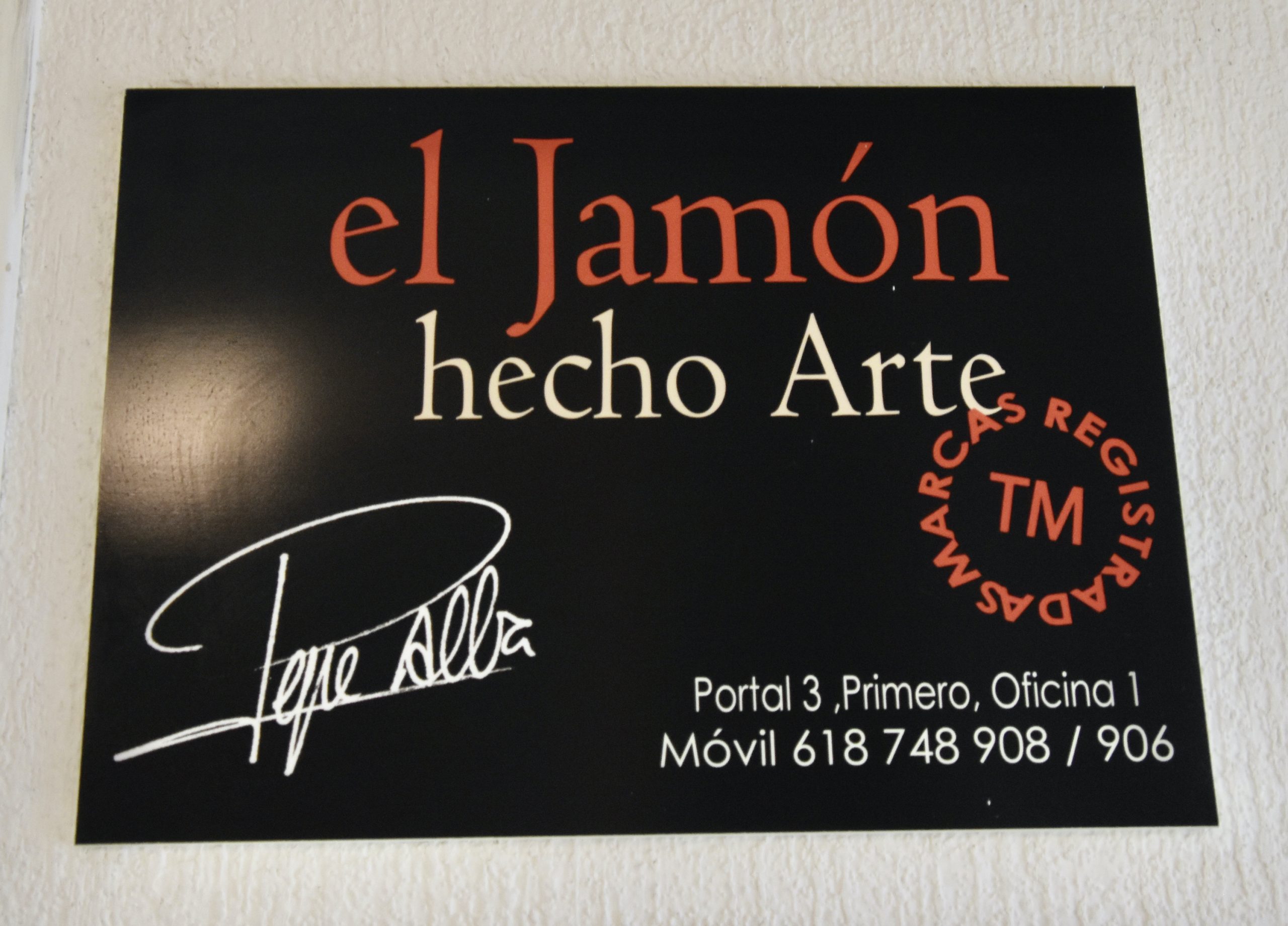
His studio offers a wide range of products including a selection of implements for carving jamon iberico. Every self respecting Extremaduran has a set of these just like we North Americans have our favourite bbq tools.
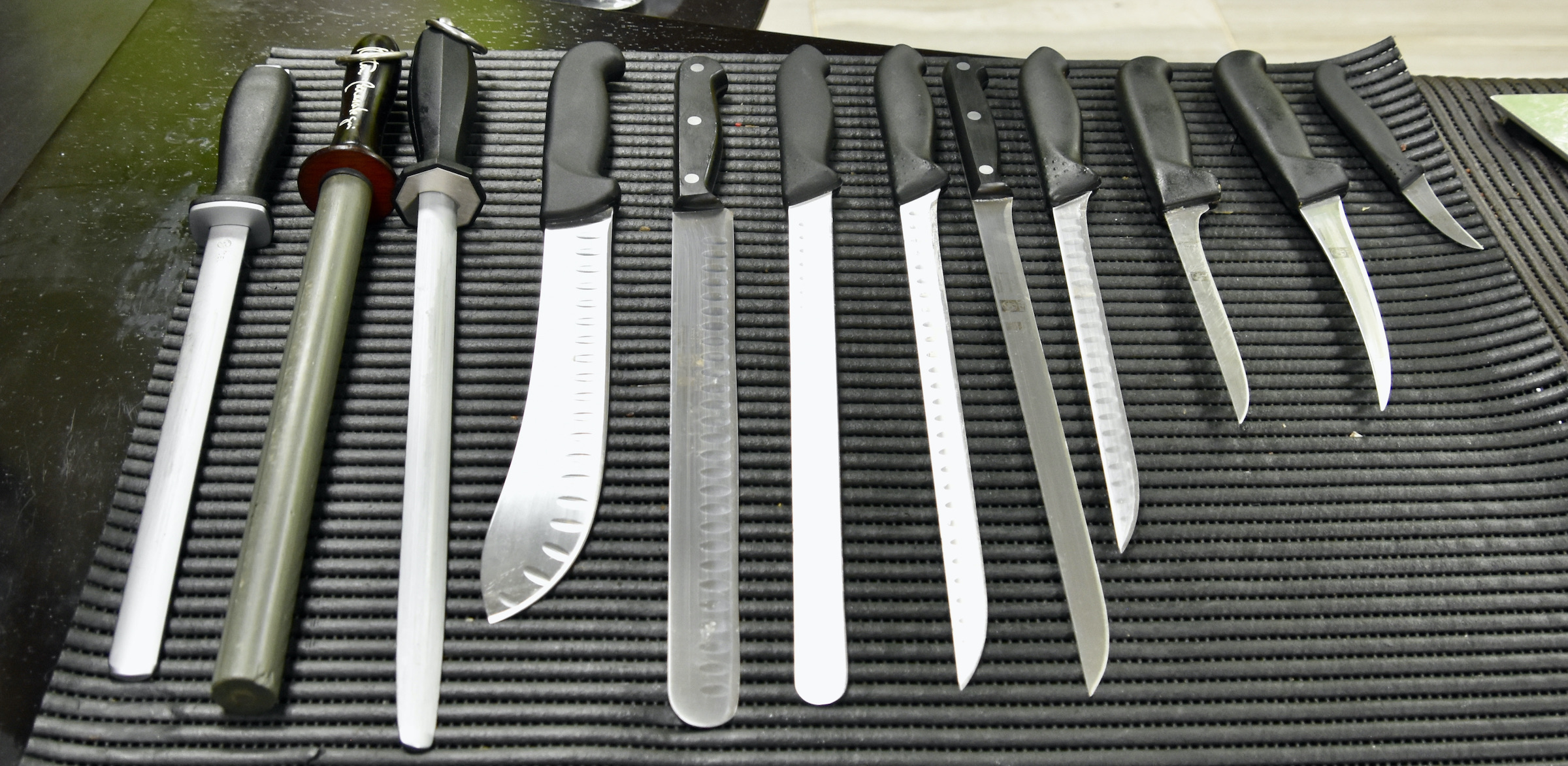
Pepe has an excellent grasp of English and gives us a brief run down of the day ahead and then we hop in the van for our first stop.
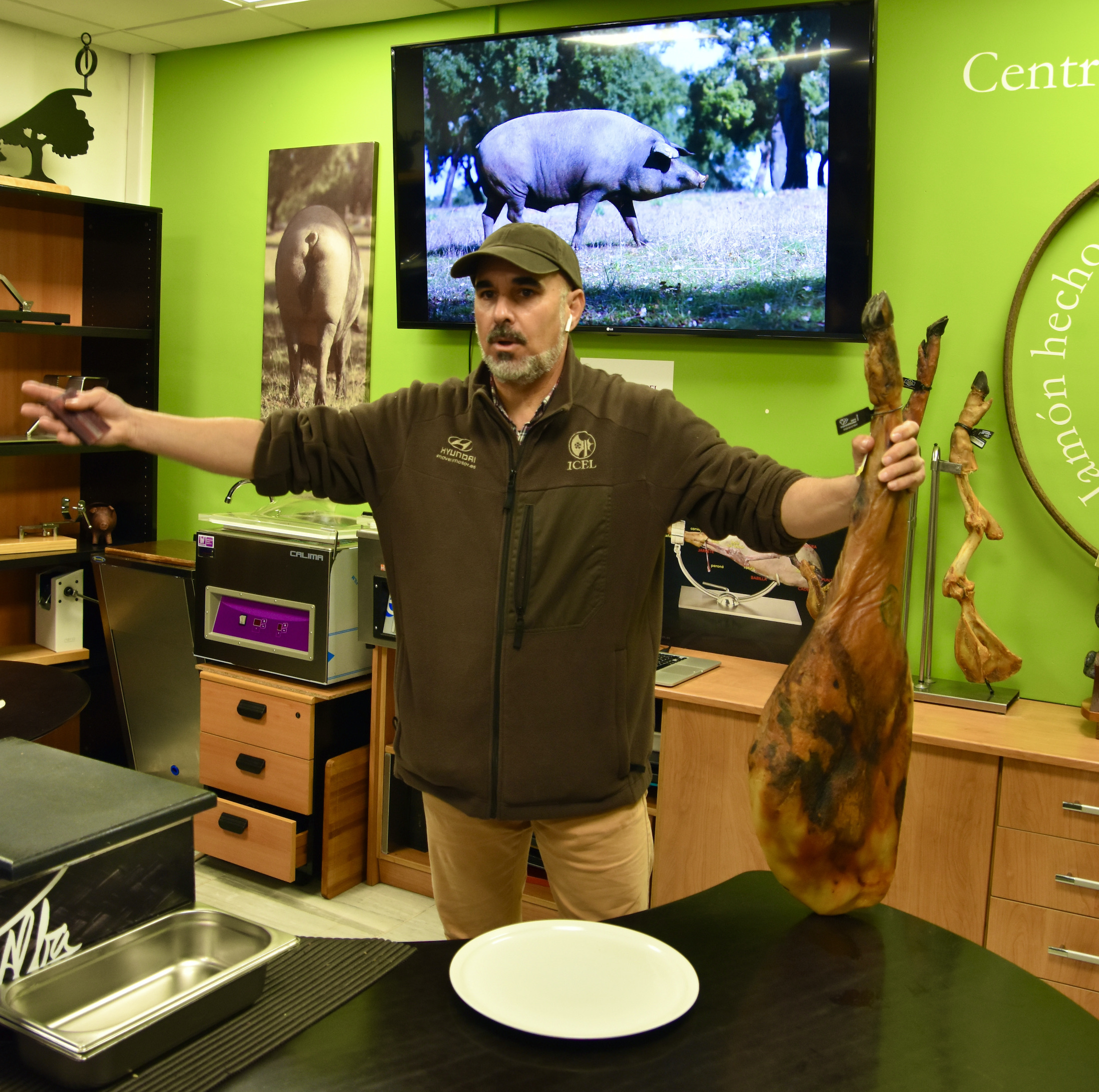
This is a typical Extremadura finca where the pigs that produce jamon iberico are raised, but unlike the massive and inhumane pig farms of North America, the pigs here have a great life except for one last day.
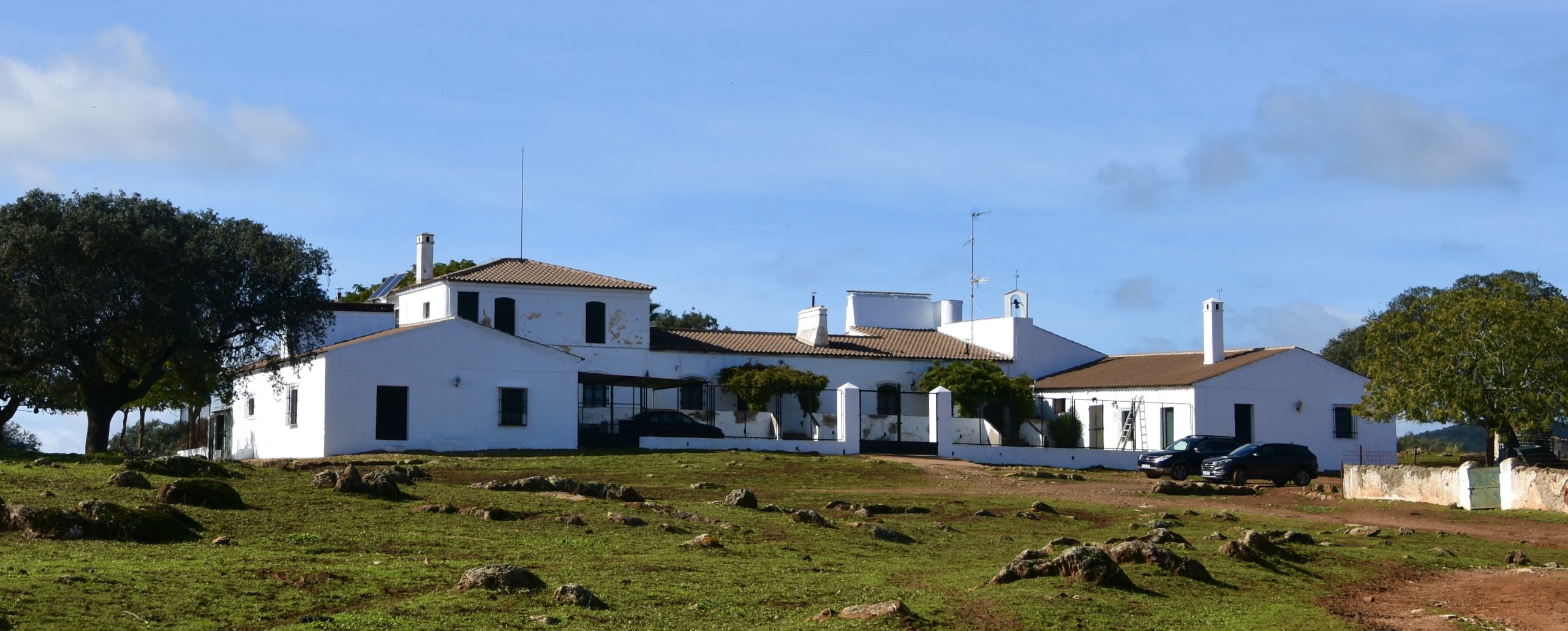
Jamon iberico is subject to Spanish denominación de origen rules that are strictly enforced to ensure quality, because these individual legs can sell for well over $1,000.00 which is a big incentive for fakery. The first requirement is that jamon iberico can only come from from the legs of an Iberian black pig or a 50 % black pig crossbred with a Duroc pig. Obviously the pure black is the preferred choice. These pigs have been raised in the Extremadura for thousands of years and have adapted to a symbiotic relationship with the dehesa forests for which the area is known. There are four grades of jamon iberico – Black label 100% Iberico de bellotta is the top grade made from only 100% black pigs that have free ranged in a dehesa forest and eaten only acorns during the last months of their two year life. These hams are cured for 36 months before going to market and it is this grade that not only costs the most, but also has the laurels as the best tasting cured ham on earth. The other three grades have a reduced requirement regarding both lineage and diet with the lowest grade, white label coming from pigs that have only been grain fed.
Pepe leads us into the dehesa forest which is a combination of widely spaced cork and holm oak trees under which grass grows on which sheep, cattle and goats feed while the pigs go for the acorns. It’s a unique landscape found only in western Spain and parts of Portugal and a beautiful place to walk. These conical buildings are ancient animal shelters.
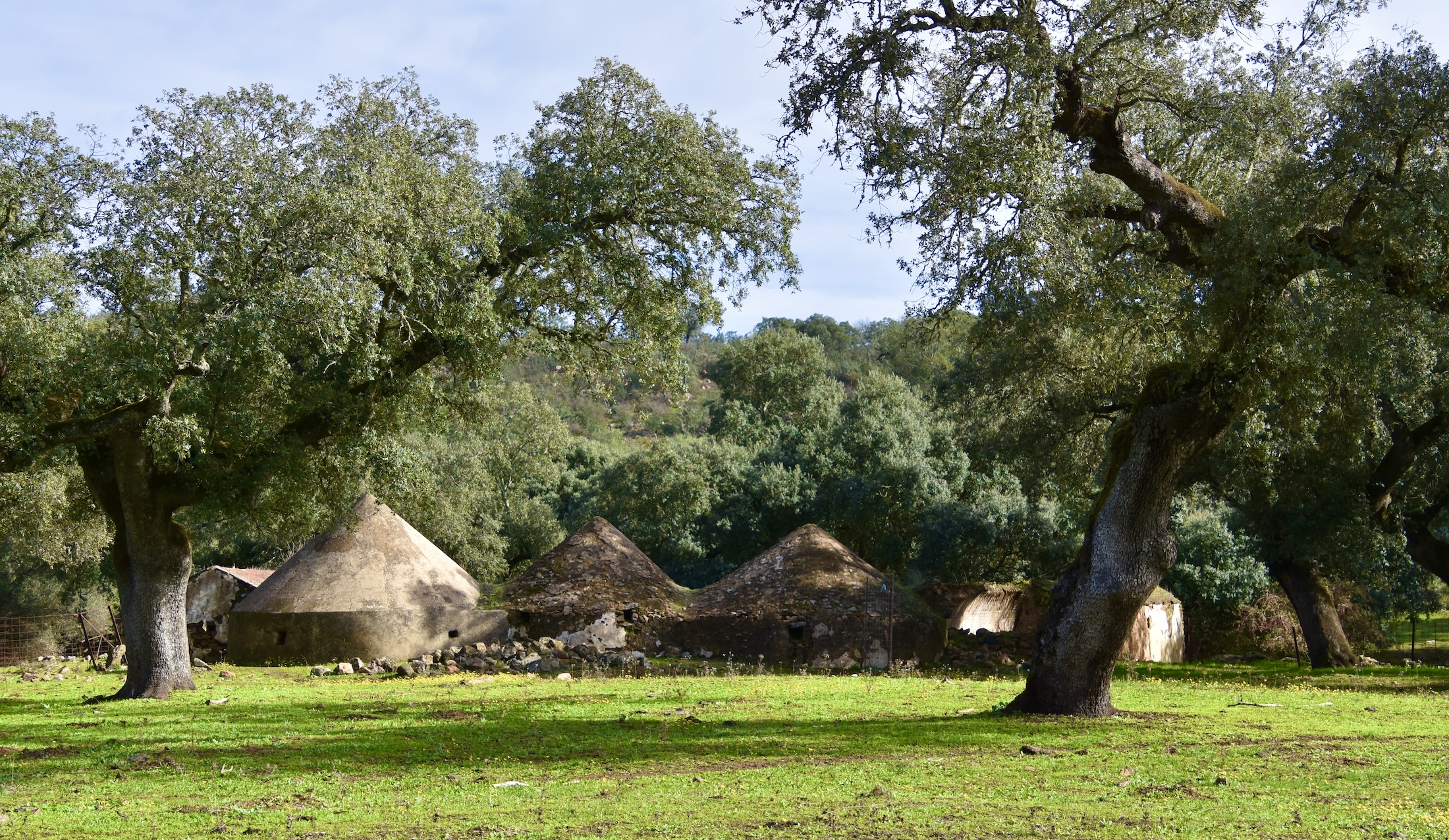
Not only grass but wildflowers abound in the dehesa forest.

And here are the pigs foraging for acorns beneath two cork oak trees that have had there bark removed. Unlike most trees, removing the bark does not harm the oaks and in nine years there will be another crop ready to be harvested. Although these are Iberian black pigs that does not mean they are black in colour.
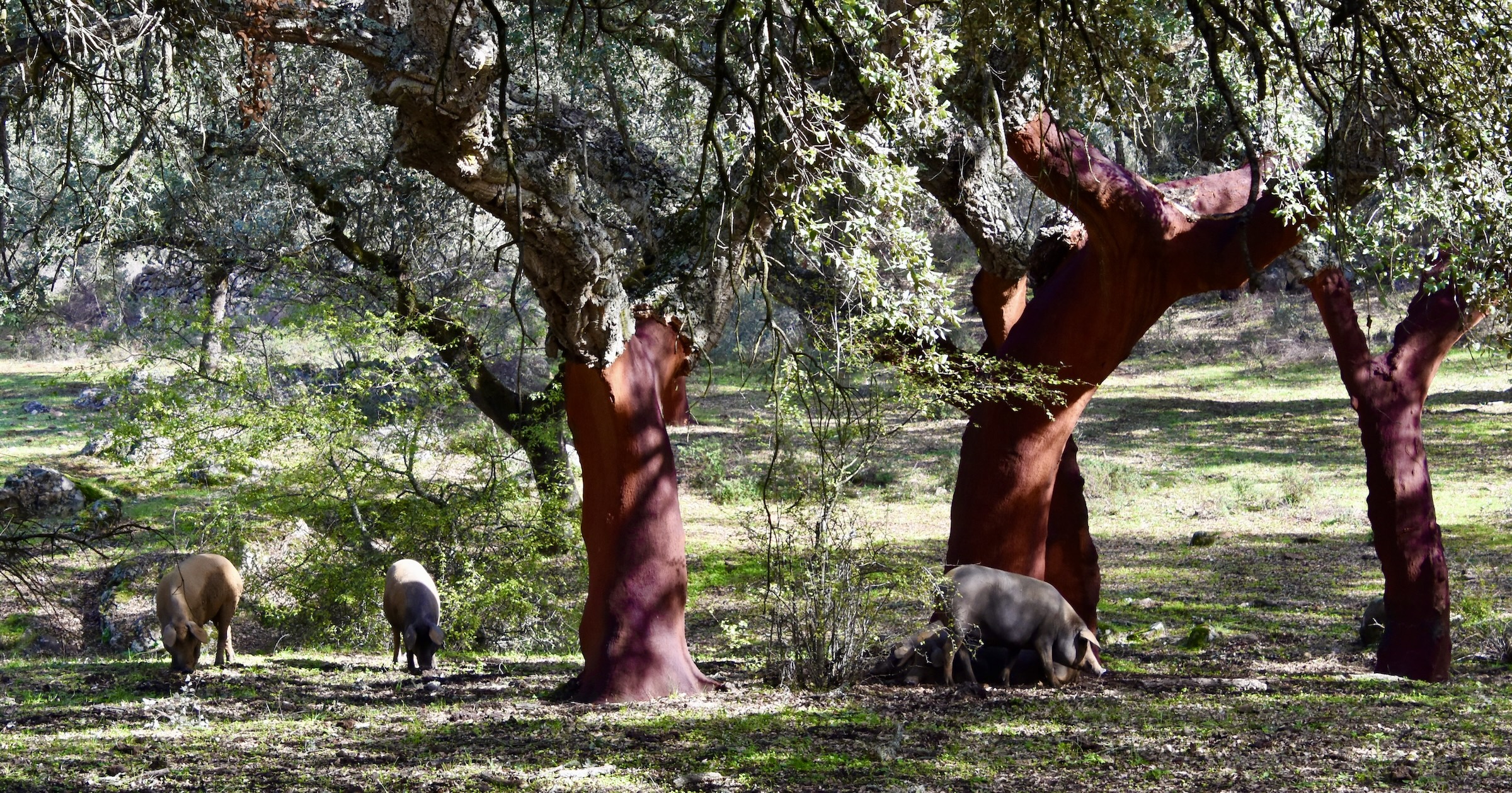
Like all pigs, the future jamon iberico pigs love to wallow in mud.
These two are in hog heaven and will be right up until that one bad day.
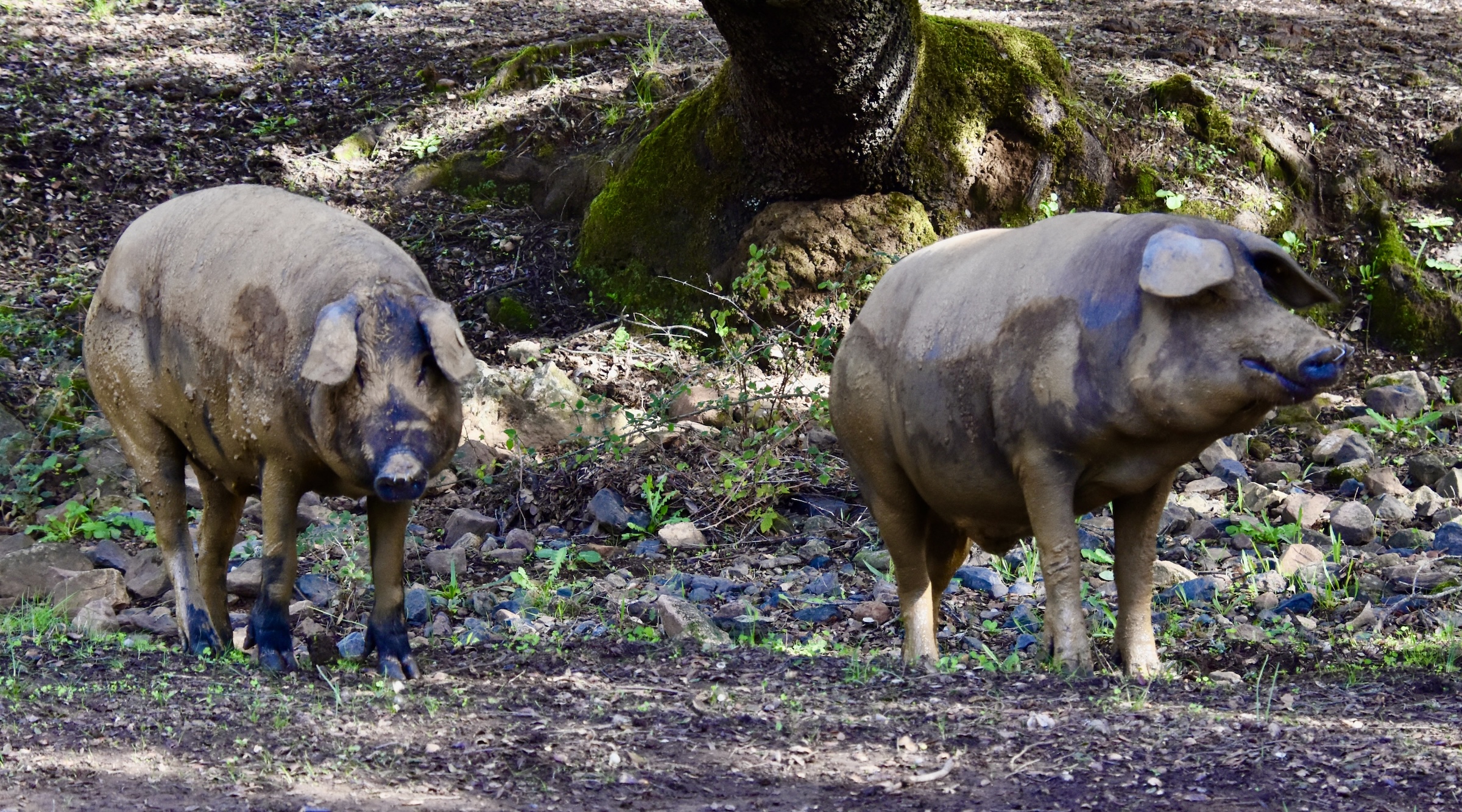
Time now to visit one of the local businesses that process the pigs into not only jamon iberico, but many other great products as well.
Wow, that’s a lot of ham!
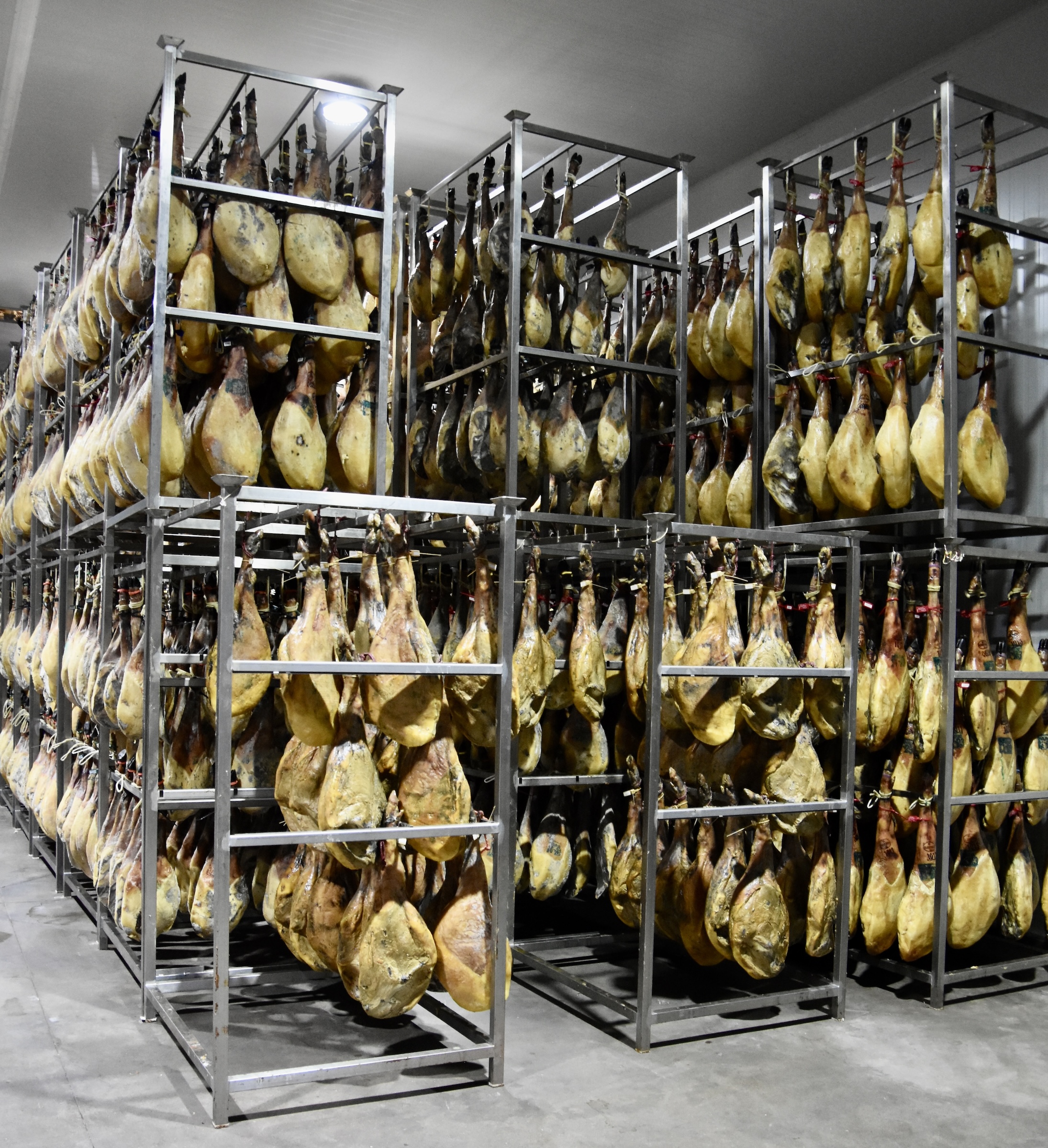
Salt is a major component of the curing process as Pepe explains from inside the salt room.
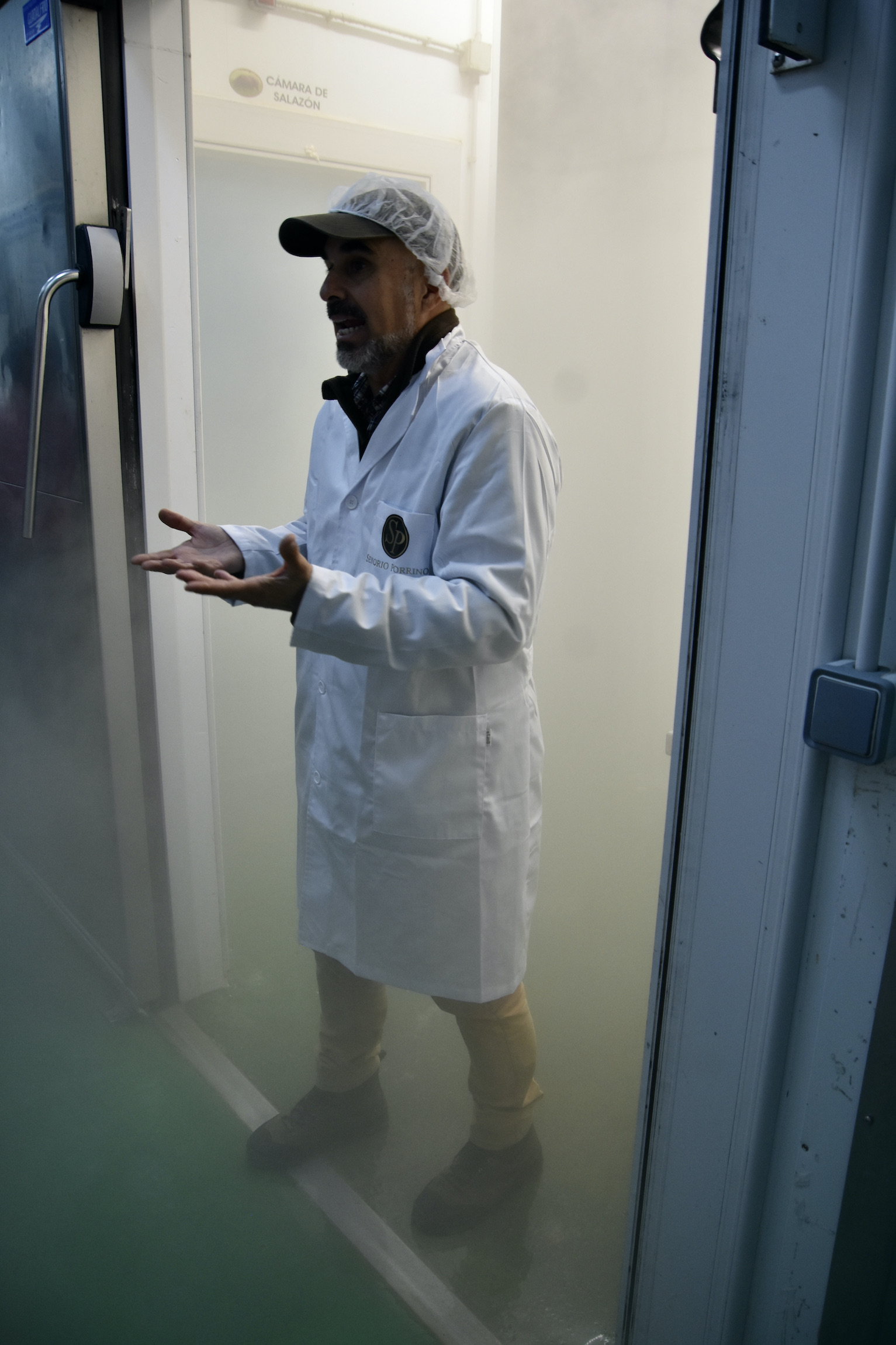
After our tour of the jamon iberico processing plant we head out for the best part of the day, a picnic where we will learn how to properly carve the meat and then enjoy it with some local cava.
Pepe picks a spot in the dehesa beside a quiet lake.
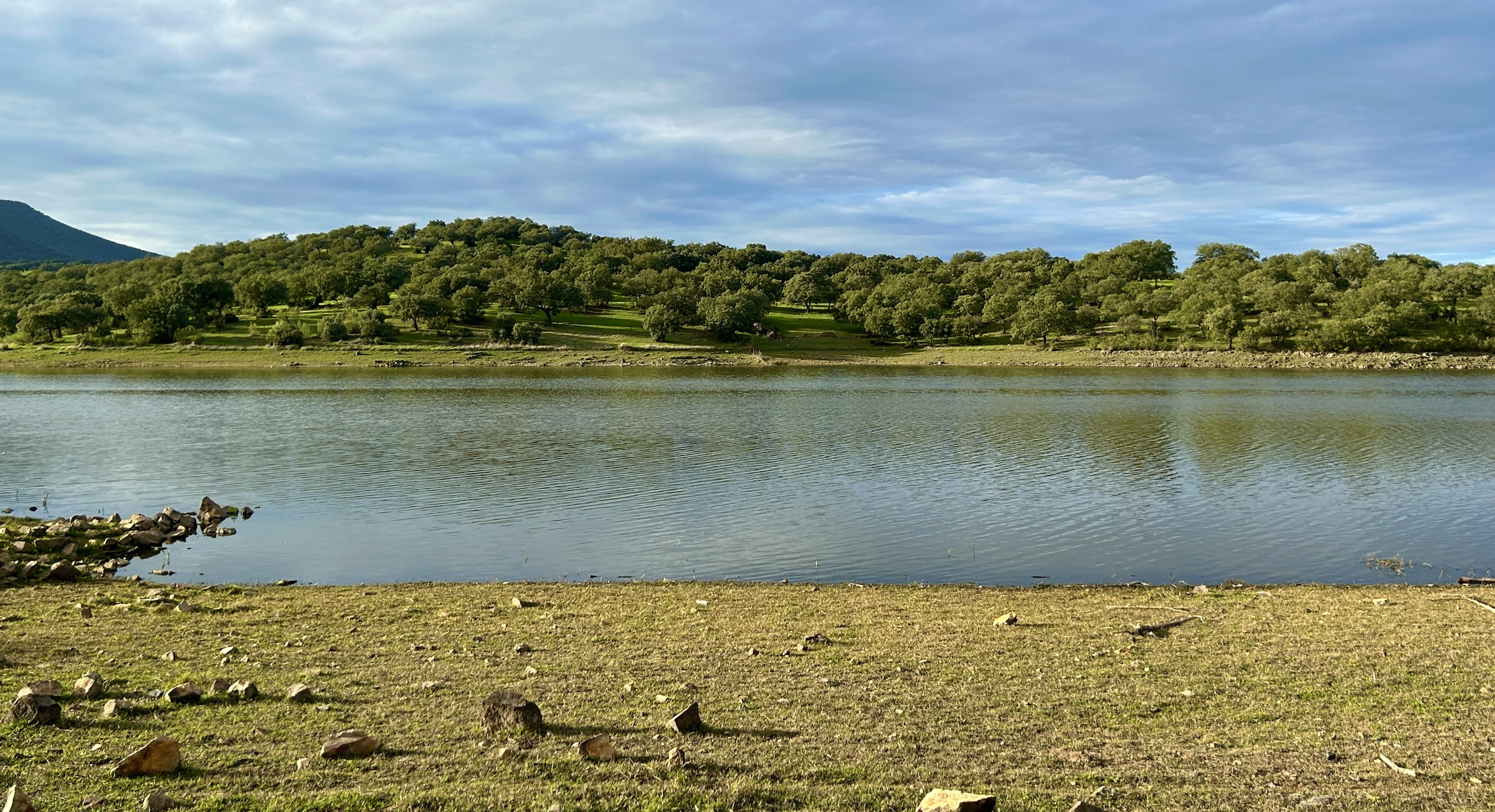
While every proper Extremadura household has its set of carving implements, so to a jamonera, which is a specially designed clamping device to hold the jamon iberico in place for slicing. Pepe has set up his jamonera and is ready to slice. There’s a couple of things to note in this photo. The first is that Pepe slices the jamon iberico in a motion that moves the knife toward his body and not away as most of would instinctively do if we didn’t know better. The second is that this is 100% Iberico de bellotta as denoted by the black label on the hoof. Nothing but the best for Pepe’s customers.
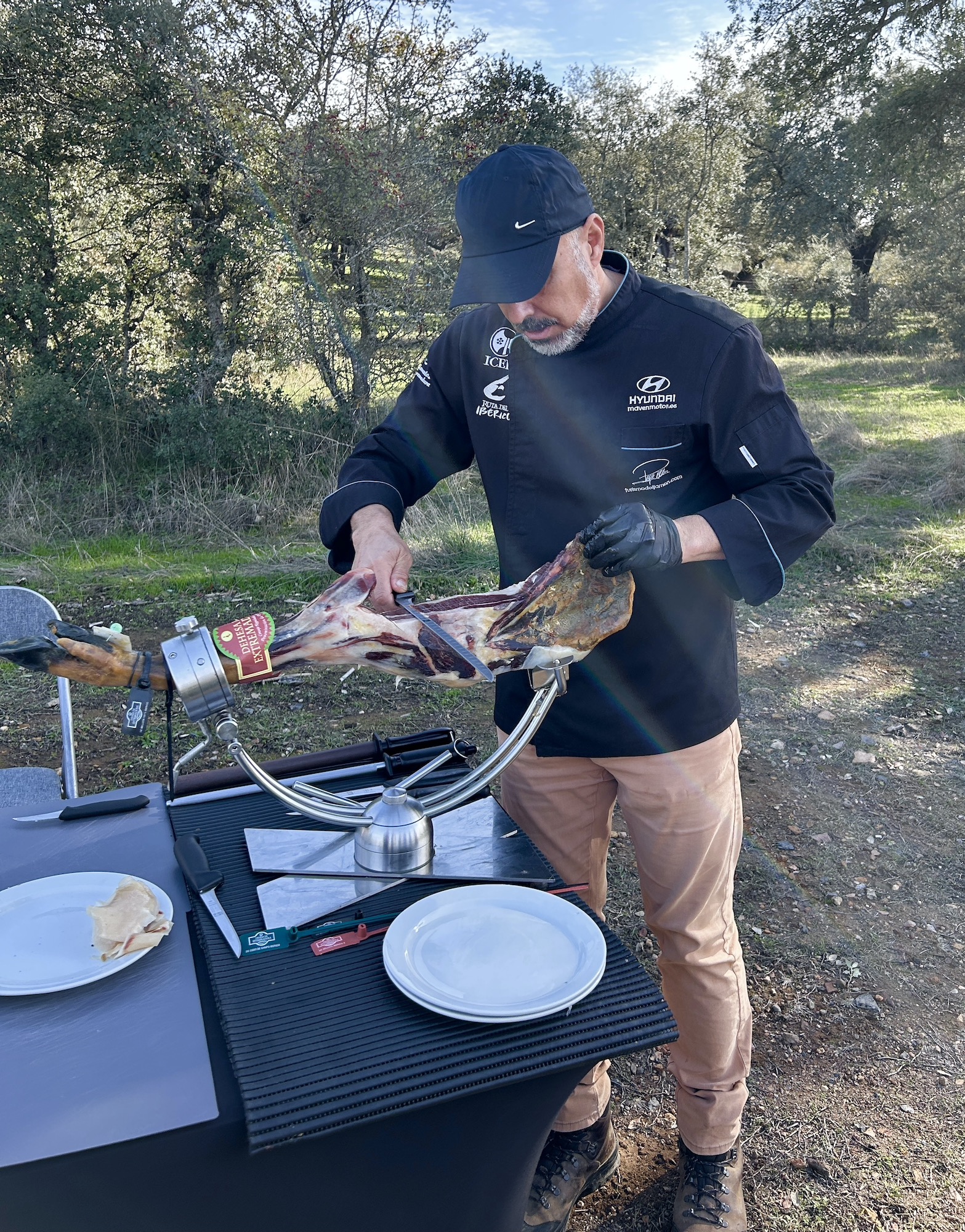
After a few rather pathetic efforts to duplicate Pepe’s adroitness with the knife we let him finish the job. The result is this lovely looking display of Extremadura meats and cheese. The jamon iberico is in the upper left corner.
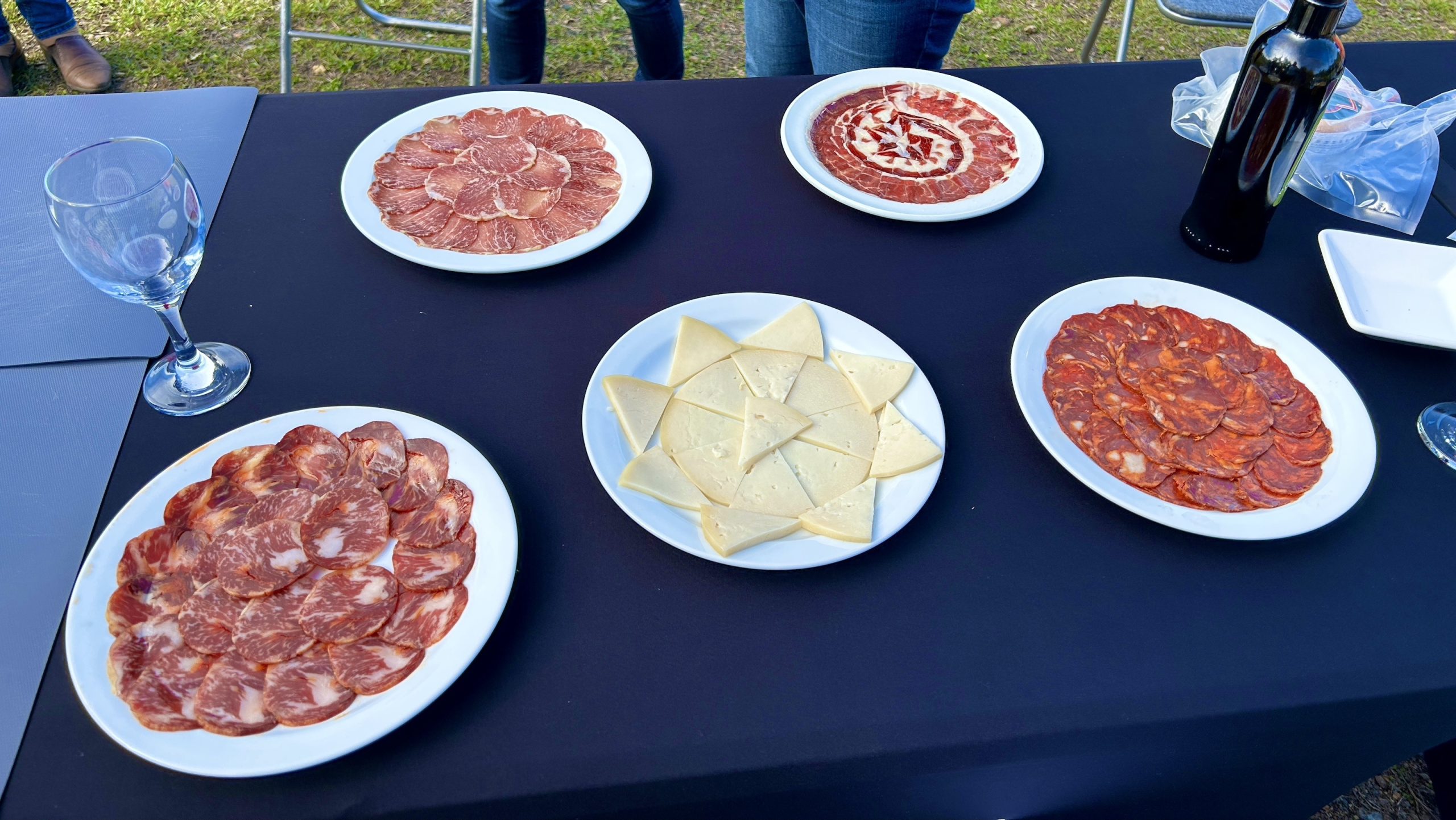
Pepe opens another product of the Extremadura a bottle of chilled Vina Romale cava which pairs perfectly with the meat and cheese. Most people think cava only comes from Catalonia, but there are a number of certified cava producers in the Extremadura including Bodegas Romale in Almendralejo which we visited later on this post-trip.
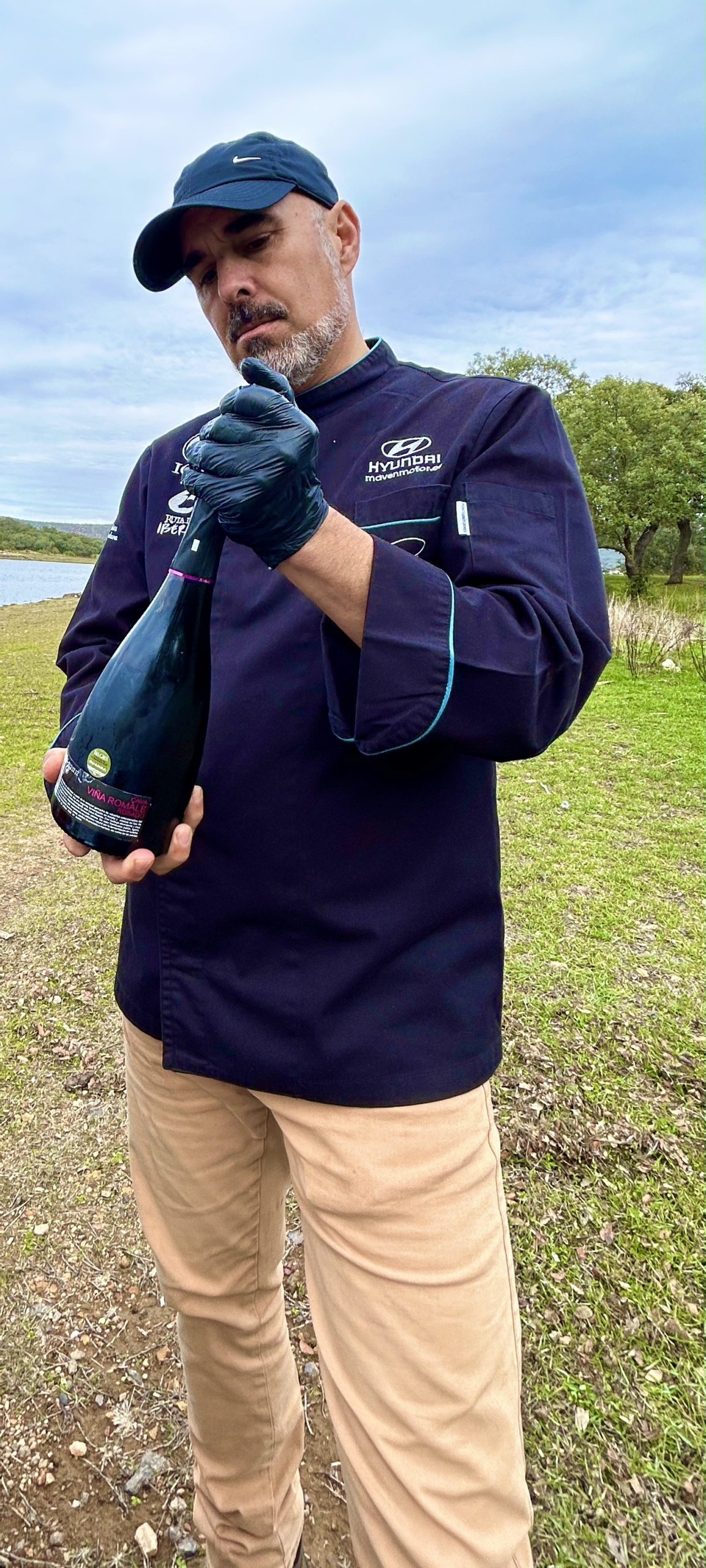
This day has been a fantastic learning experience for all of us and the type of sustainable tourism that every destination should be striving for. Thank you Pepe Alba!
For even more info about jamon iberico you can visit the Museo Jamon in Monesterio which is a real museum as opposed to the dozens of places claiming to be jamon museums in Madrid and Barcelona which are actually just places trying to sell you jamon, often at inflated prices.
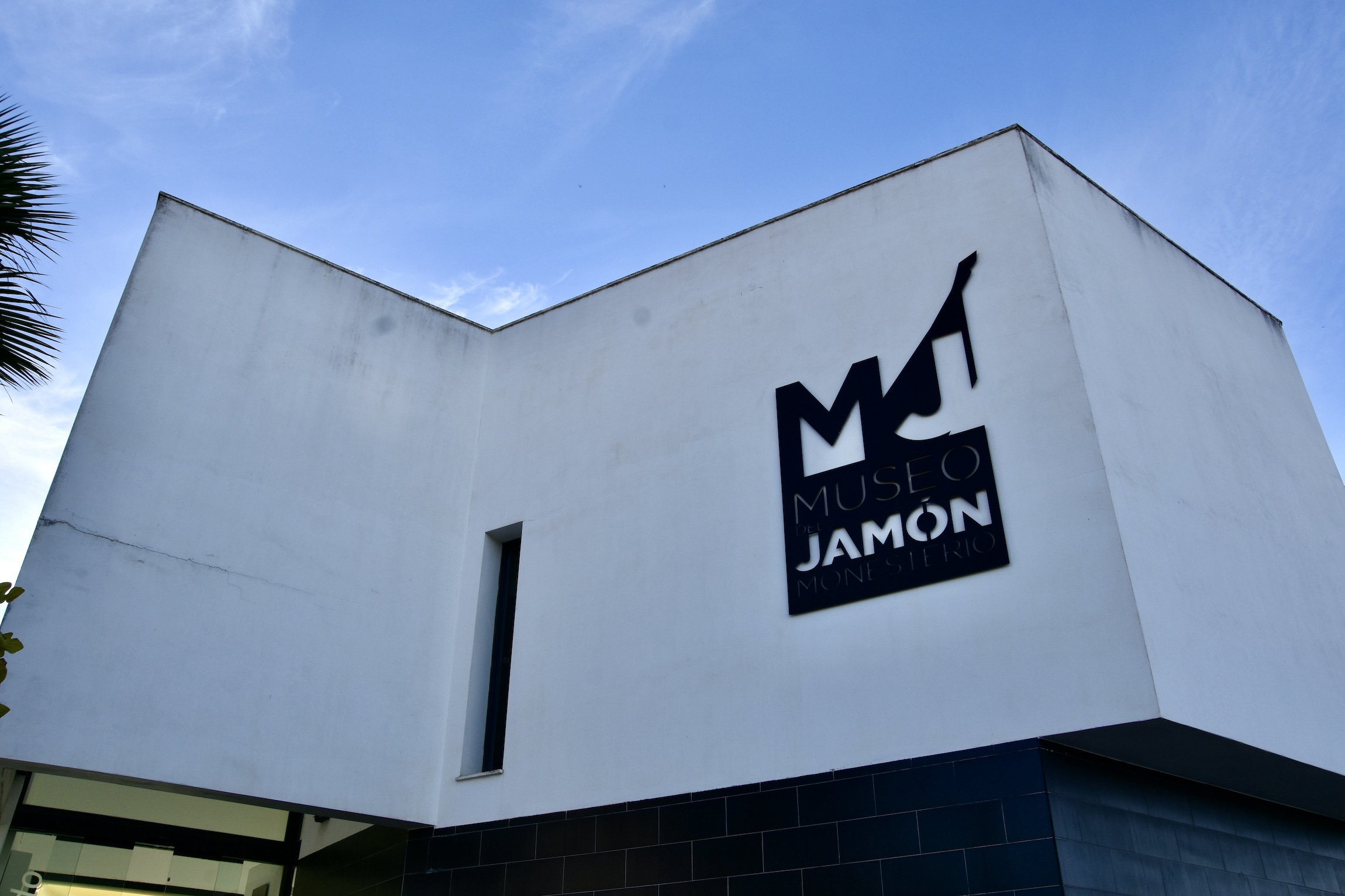
In the next post rom Extremadura I will explore the UNESCO World Heritage Site of Cáceres.

